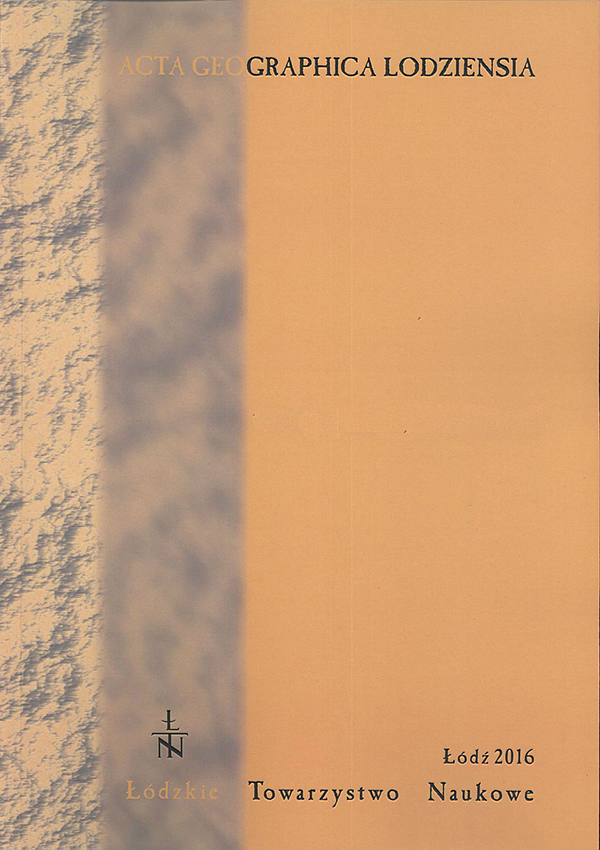Warunki funkcjonowania i rozwój torfowiska w zagłębieniu krasowym w okolicach Paradyża
Conditions and functioning of the peatland in the karst subsidence sinkholes in the area of Paradyż
Author(s): Dorota Brzozowicz, Jacek ForysiakSubject(s): Geography, Regional studies, Environmental Geography
Published by: Łódzkie Towarzystwo Naukowe
Keywords: sinkholes; karst subsidence; peat; Holocene; Opoczno Hills
Summary/Abstract: The karst subsidence sinkholes are landforms that frequently appear in the upland parts of Poland, especially in the border zones between uplands and lowlands. Their genesis and the characteristics oftheir fillings have been discussed in publications such as: Różycki (1946), Nowak (1971, 1993), Kobojek (2004).Sinkholes develop as a result of the subsidaence of rock formations susceptible to karst processescovered with a continuous layer of sediments invulnerable to said processes, frequently also characterisedby poor permeability. The fact that the depressions oftentimes do not possess a permanent outflowmakes their basins a perfect site for the functioning of water reservoirs or peatbogs.The vicinity of Paradyż in the northern part of the Opoczno Hills is located in an area where upper Jurassic limestone is covered by a 20 metre layer of Pleistocene moraine till. Various formations rangingfrom fissures and corridors to karst funnels develop in the limestone, which has a limited resistanceto dissolution by water. The most characteristic formation in the Paradyż region are subsidencesinkhole that may contain three types of filling (Figs 1, 2). These are mineral sediments, biogenicsediments, and water. Four depressions have been selected for a thorough analysis, two of them were dry, partially filledwith mineral matter, one was partially occupied by a water reservoir and peat, and one with a peatbog,filled almost entirely by biogenic sediments (Figs 3, 4). The last of the selected depressions provided the source for the extraction of a peat core for laboratory study. The conducted lithological analysis of the sediments and their physicochemical propertiesfrom the core D-1 revealed a high diversity of these sediments. This points to an observation that the environmental conditions of the development of the peat bog changed several times. The fluctuations of the studied parameters allowed to distinguish 6 levels corresponding to the phases of the developmentof the peatbog (Fig. 5). The first two levels represent the sediments with high non-organicmaterial content but with a gradual increase of the organic part content for which the parameters suggested varied environmental conditions. These sediments were deposited in the Sub-boreal period. Thefollowing two levels contain herbaceous peat with varied stages of decomposition whose all assessed parameters suggest a higher environmental stability. Level V contains highly decomposed peat withstable ash content and pH, similarly to the previous level, however with varied conductivity and CaCO3 content. The final sub-surface level is characterised by a highly varied values of all study parametersand an increase in the non-organic matter content.The carried out work suggests that the documented depressions represent different stages of landformdevelopment and the depressions with mineral matter in the bottom are likely young. The depressionswith biogenic sediments are older and the properties of the peat documented in the DAL-1 object suggest the stabilisation of karst processes in its immediate proximity.
Journal: Acta Geographica Lodziensia
- Issue Year: 2016
- Issue No: 105
- Page Range: 69-79
- Page Count: 11
- Language: Polish

